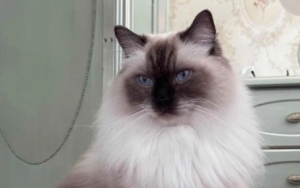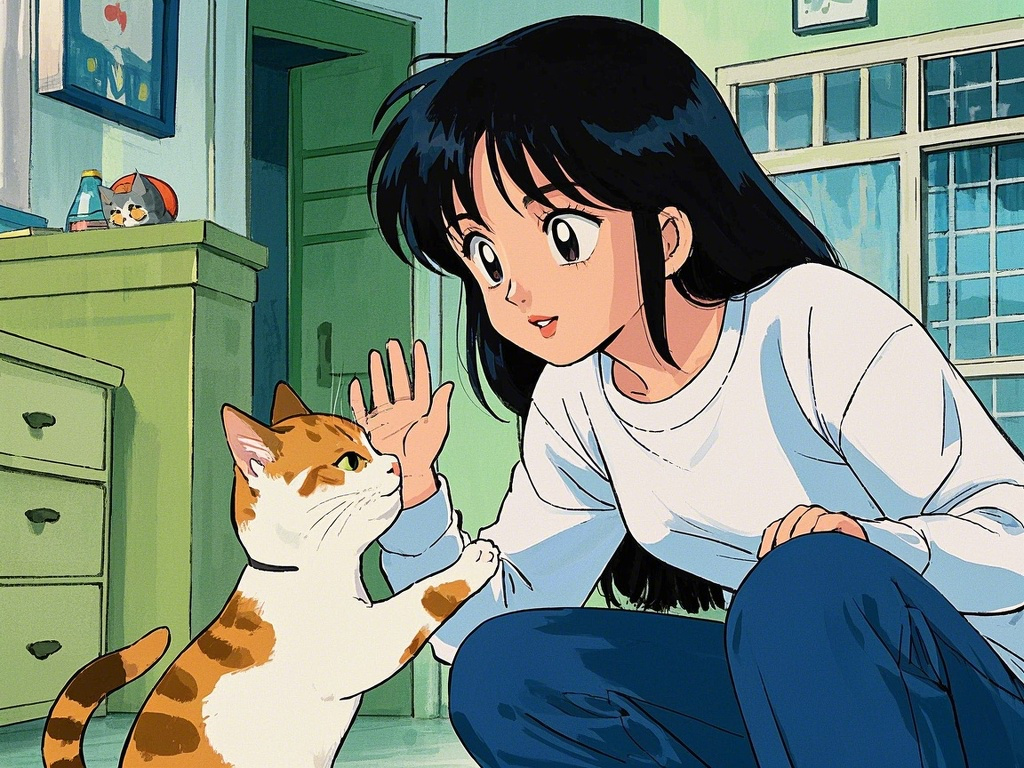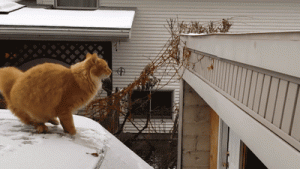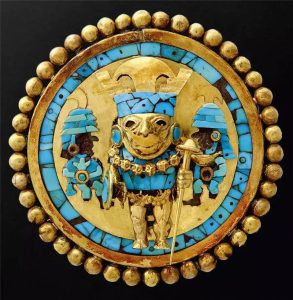“Since I got a cat, I’ve developed a bad habit: constantly bragging about how smart my cat is. For example, my cat can understand what I say, open doors, and these little feats can make me happy for the whole day. Today, let’s dive into which behaviors can hint at your cat’s high intelligence.”
-
Pushing Objects Off Surfaces
Has your cat ever knocked your keys or remote off the table when you’re not looking? Don’t get mad just yet—it’s not out of malice! Cats aren’t trying to destroy your stuff; they’re conducting “physics experiments.” Researchers have observed that before pushing an object off a surface, cats will analyze the angle and distance of the fall. High-IQ cats even adjust their push force based on the material of the item: a light tap for a ball, and a clawed grip for a plush toy. This is how cats explore the world—pushing objects helps strengthen their spatial reasoning abilities.
-
Opening Doors
A cat that can turn a doorknob or open a drawer really deserves to show off! Cats who can open doors have 43% more active brain activity than those who can’t. Here’s a little secret: cats learn how to open doors by observing their owners. Their ability to learn is truly impressive—on par with human toddlers. What’s even more fascinating is that some cats can generalize this skill: a cat that learns to open a push-pull door can master opening drawers within two weeks. Pretty smart, right?
-
Mimicking Hunting
When you see your cat pouncing at nothing, you might think, “Who’s making my cat act like this?” Don’t worry—your cat isn’t possessed! It’s practicing its hunting skills. High-intelligence cats adjust their tactics based on the “prey”: when chasing a rolling ball, they accelerate in a straight line, while stalking a plush toy involves a sneaky pincer movement. When no toys are around, cats will mentally rehearse a “cat chasing a mouse” scene. So next time you catch your cat doing this, don’t rush to stop it—it’s just being a natural-born hunter.

-
Communicating with Humans
Have you ever come across those “cat language” videos online? For instance, “Meow~ means come here,” and you play it for your cat. Cats with higher IQs can produce over 7 distinct sounds with actual meaning. A quick, high-pitched “meow” signals hunger, a drawn-out “mew” is a request for attention, and a low growl is a warning. What’s even more fascinating is that cats combine body language with vocalizations to enhance their communication. For example, rubbing against your leg while purring means affection, while a puffed-up tail signals fear. Not only can cats “talk,” but they can also understand their owner’s commands. Trained cats can follow over 15 commands, with an 80% accuracy rate for simple ones like “sit” and “come.” Cats that can communicate are truly the little scholars of the feline world!
-
Hiding Objects
Has your cat ever hidden something? If you find a toy in an unexpected place, it’s not because your cat is bored and left it there—it’s a sign of something more intelligent. This “hiding behavior” is similar to humans saving money: it’s a form of foresight and long-term planning. Only high-IQ cats have this advanced cognitive ability. Researchers have found that cats will choose hiding spots based on the value of the item. A tasty treat might be tucked deep into the couch, while a regular toy might be placed in a hidden corner. Clever cats even assess their surroundings, prioritizing dry, concealed areas with little foot traffic. So, if you find your cat’s “stash” next time, give them a little celebration—they’re showing off their smarts!
-
Spatial Exploration
Does your cat get obsessed with cardboard boxes as soon as a delivery arrives? Yep, mine too! But don’t think your cat is just in the way while you open your packages. They’re actually exploring complex spaces. What’s even more remarkable is that high-IQ cats will use furniture to create “hunting routes.” They’ll turn boxes, couches, and windowsills into a 3D obstacle course, constantly re-enacting hunting scenarios.
Cats that frequently engage in this kind of play tend to have more flexible thinking and are better at solving complex problems. So next time, make sure to give your cat a little extra time with the cardboard box!





